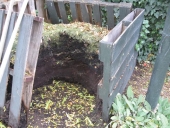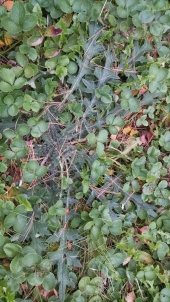
 2
2




 1
1




Jd
 1
1




J Davis wrote:Sounds like a big project.
If you dont have sonewhere out of sight, but in the sun, to let the viney stuff breakdown, then renting a chipper might be a good option.
Are you sensitive to urishiol (poison ivy)?
If so, I would consider wearing protective clothing and face mask if you run the chipper, as somebof that oil may end up as droplets in the air during chipping.
 4
4




 3
3




Mj Lacey wrote: The landscape fabric is in bits and needs replacing,
A build too cool to miss:Mike's GreenhouseA great example:Joseph's Garden
All the soil info you'll ever need:
Redhawk's excellent soil-building series





 3
3




Trace Oswald wrote:
Mj Lacey wrote: The landscape fabric is in bits and needs replacing,
The only thing I have to add is that you couldn't pay me enough to put landscape fabric down anywhere, and especially after I went to all the work to remove it after it broke down the first time. If you replace it, it's inevitable it will break down again, and again, and for the remainder of your, and whoever comes after, lifetime. That is a merry-go-round I would never put myself on.




Allison Whitacre wrote:Short answer, yes you can compost all those weeds! Chop em well and mix them in.
Long answer: use caution. Some weeds (we're looking at the ivy family here..) will somehow continue to grow even when buried into a pile. Baking them in the sun for a day or two first greatly helps prevent this. I love and hate my ground ivy. It's short so doesn't tend to bother my established plants, and the pollinators love the prolific purple flowers, plus it is super easy to pull up since it has a very shallow root and runner system. However, it takes a LOT of work to kill it. It's very hardy. My process is to pull it, spread it out on a tarp in the sun for 2 days, then add it to the compost pile. I immediately pull any very dedicated starts of it from the pile and repeat.
 1
1




Mj Lacey wrote:As leaves fall in abundance on this I guess my new permanent pastime will be removing leaves from the gravel (for which there seems to be no good solution) and raking gravel every week or two.
Any tips on getting the fabric up when its at / past end of life?
A build too cool to miss:Mike's GreenhouseA great example:Joseph's Garden
All the soil info you'll ever need:
Redhawk's excellent soil-building series





 1
1




Forever creating a permaculture paradise!
 2
2




“We can complain because rose bushes have thorns, or rejoice because thorn bushes have roses.” — Abraham Lincoln
 2
2




Jen Fulkerson wrote:I like cardboard, we seem to have an abundance of it because my son is addicted to Amazon. So it's a win win, get rid of the cardboard, and suppress the weeds. It doesn't last that long, but it gives you some time to get enough mulch, which ever kind you choose, down to keep the weeds out. If you choose to go with wood chips for paths, and aren't going to have enough of your own, lots of tree company's will give you wood chips for free. The down side of this is you don't know what kind of wood you will get, or what chemical the tree was exposed to. Pace yourself, when you have a huge project like that it's easy to get burnt out. Good luck to you.
 3
3




I don't think I've ever seen an ugly cloud, and I don't think I ever will.

|
The only cure for that is hours of television radiation. And this tiny ad:
Learn Permaculture through a little hard work
https://wheaton-labs.com/bootcamp
|






